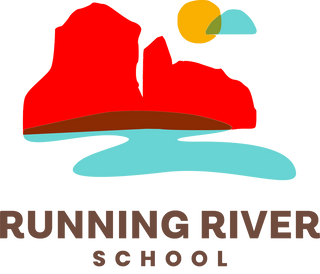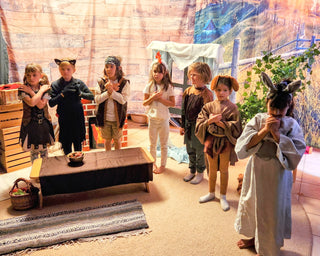Curriculum Skills Overview
- Theme: Fairy tales, fables, and myths from around the world
- Letters of the alphabet; word families; exercises in reading, writing, and speech; story properties; writing simple sentences
- Recalling lessons in review
- Number patterns, manipulate numbers up to 24 with the four processes of addition, subtraction, multiplication, and division
- Practicing painting and drawing techniques
- Singing and flute playing
- Following movement activities to develop balance, agility, coordination, and left/right recognition
- Spanish
- Class Play
Life Skills
- Listen with attention, raise hand to speak, take turns
- Participating in clean-up duties and regular chores, offering assistance with weekly classroom tasks
- Building social relationships
- Become a member of the class, adjusting self needs to the needs of the group
- Treat others with respect and tolerance
- Work through challenging tasks, correction, and frustration
- Develop skill in social use of language, for example, the
use of “please” and “thank you”
Detailed Curriculum
A loving, artistic environment rich in imagery, art, movement, and nature surrounds the first grade child. It is the beginning of the formal path designed to evoke a lifelong love of learning. The first grade child’s new capacities of memory, gross and fine motor skills are supported in the first grade curriculum through imagery, movement, music, handwork, drawing and writing. First grade is a time to awaken the wonders of numbers, letters, language, color, rhyme, natural phenomena, classroom habits and a healthy social life.
At this phase of the child’s development, the six and early seven year olds are crossing a major developmental threshold that will free their memory to construct and deconstruct both tangible and imagined experiences in a new and more consistent way. For this reason, it is at this time when we begin formal learning. The child still learns primarily through imitation and imagination so the environment is nurturing, safe, loving, compassionate, respectful, and patient. As the child’s memory shifts during this time of transition, thinking and memory skills are called upon through new learning techniques such as writing, formal recall, and guided illustrative work. Socially, this is the time of forming classroom and community habits that will carry forth into the coming school years.
Language Arts
- Writing
- Pictorial and Phonetic Introduction to Letters
- Reading Approached through Writing
- Speech Formation/Dramatics
The first grade curriculum utilizes fairy tales from around the world that address the students' inner growth and development. Using this literature as a foundation, the teacher plans exercises in reading, writing, and speech. Children are introduced to the letters of the alphabet as forms and sounds. Out of a transformation from picture to symbol, the letters become actual characters to which the children have an enlivened relationship. Sound/symbol relationships are practiced, and after the majority of letters are introduced, the children practice writing familiar sentences, using phonemic patterns and sight words.
Mathematics
- All Four Operations (addition, subtraction, division, multiplication)
- Geometric Movement
The children learn to do simple arithmetic through movement exercises that involve stomping, clapping and tossing beanbags. Through these exercises, they first experience the qualities of numbers before learning arithmetical operations. The four operations are introduced as four characters in a story. After considerable practice with manipulatives and mental math, they move to the written equations yet remain concretely connected through story and illustration. By the end of first grade, they have been taught to manipulate numbers up to 24 with the four operations of addition, subtraction, multiplication, and division, as well as skip counting by 2, 3, 4, 5, and 10.
Natural Sciences
- Nature Study
- Gardening
First graders take regular nature walks and observe the daily and seasonal changes in the natural environment. Simple gardening tasks and nature stories also provide a forum in which simple science concepts are introduced.
Social Sciences and Pre-History
- Folk Tales and Ancient Legends
Through the use of fairy tales and ancient legends, students are introduced to a variety of historical and social science concepts in a non-abstract, story-format.
Fine Arts
- Form and Freehand Drawing
- Watercolor Painting
- Beeswax/Plasticine Modeling
The year begins with the awareness that behind all shapes are of two basic forms: straight and curved lines. These two lines are combined in various patterns, as the subject of form or dynamic drawing. These drawings train motor skills, awaken powers of observation, and provide a foundation for the introduction to the letters, and the later study of geometry.
Handwork
- Knitting
To support fine motor skills and assist in mathematical learning, knitting is an exceptional tool that supports quiet study and concentration.
Music
- Pentatonic Flute
- Singing
Music follows the students throughout their time in first grade as they fill each day with verse and song. The teacher leads the class through transitions from activity to activity with verse and song. Singing together, children learn to blend their voices with one another. Students also learn to play the pentatonic flute, a beautiful wooden instrument tuned to the tones of childhood. Flute playing helps the students regulate breath and helps with the development of finger coordination even as it tunes the ear and provides each student the pleasure of making beautiful music together as a class.
Physical Education
- Games
- Outdoor Activities
- Nature Walk
- Nature-Based & Curriculum-Related Field Trips
- Recess/Freeplay
Physical activity is a key component in Waldorf education. Seen as a necessity for all children, movement throughout the day supports learning and physical development. The morning walk is a favorite part of the student’s day.
Ample recess time allows for free play, which is an important part of the young child’s development. An introduction to Eurythmy, provides the foundation for future in depth study.

First Grade Teacher
Cara Losapio
Ms. Cara's background is originally in law. More recently she has been a teacher in a special education residential environment. She believes that the classroom should provide a safe and nurturing environment for each student to develop themselves wholly, not only individually, but as a member of the community.
Admissions Inquiry
Running River School uses an open enrollment model whereby a student may enroll at any point in the year (up through April 15). Please inquire about openings or to be placed on a waitlist.

